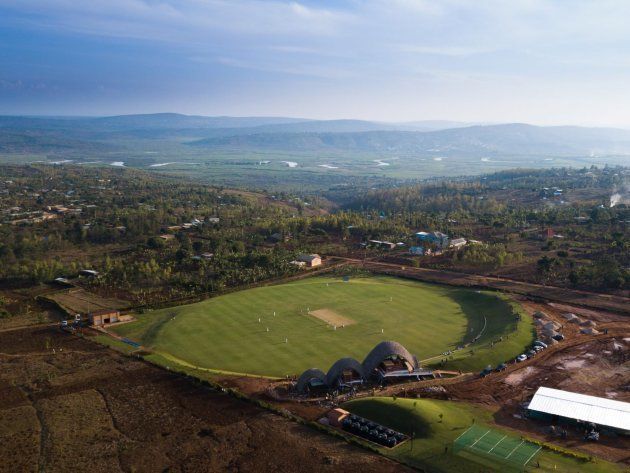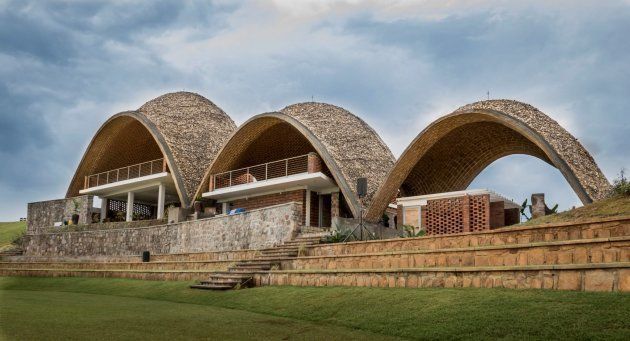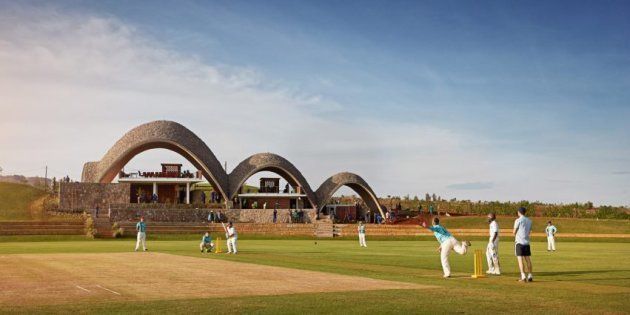The Rwanda Cricket Stadium, built almost entirely with bricks made from the soil of the building site, is a triumph of bold design, sustainable resource use and innovative construction techniques -- another brilliant vaulted project featuring the tell tale style of Light Earth Designs, a collective founded by Tim Hall, South African architect Peter Rich, and Michael Ramage.
Rich is famous for the award-winning Mapungubwe Museum.
The project was conceived by Light Earth Designs, a British firm which Rich is a partner in. It embraces ancient African forms in its aesthetic, and employed cutting-edge technology to create the extraordinary double-curve vaulted structures that form the pavilion.

"Light Earth Designs developed a process for constructing thin-shell vaulted buildings using locally sourced materials and labour. The same technique was previously used to erect a cultural centre in South Africa that was named World Building of the Year at the World Architecture Festival in 2009," Light Earth Designs revealed in a statement about the project.
The tiles for the Rwanda Cricket Stadium were made on site from local soil by low-skilled and skilled local craftsmen, the firm explained. In their process, the soil is mixed with a small amount of cement and hydraulically pressed, so no firing (and hence no kiln or heating fuel) is required.
Over the tiled inner surface, the vaults are strengthened with a geosynthetic soil-reinforcement mesh called geogrid mortared between more tile layers, and the exterior of the parabolic structures is decorated with locally sourced granite fragments also secured by mortar.

A temporary timber framework was erected to support the tiles, which are laid in layers to form vaults that draw inspiration from ancient Mediterranean construction techniques and span up to 16 metres.
"The vaults follow the natural resolution of forces toward the ground," said the architects, "closely mimicking the parabolic geometry of a bouncing ball and evoking the cherished hilly topography of Rwanda."

"While the language of the building speaks about progression and dynamism through extreme structural efficiency, the materials speak of the natural, the handmade and the human," according to Light Earth Designs. "It is a building made by Rwandans using Rwandan materials."
